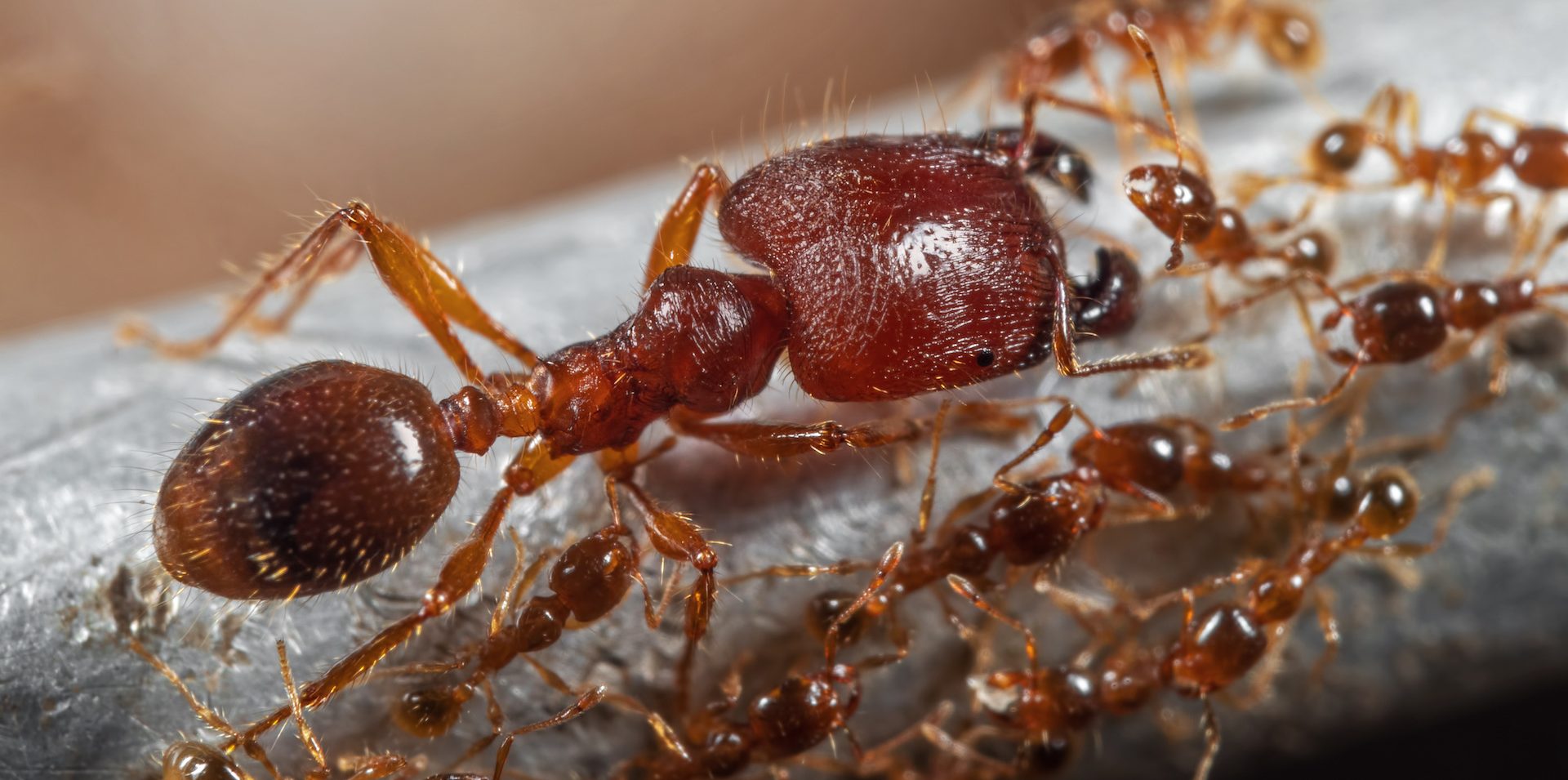Featured Image Source | University Of Florida
Big-headed ants are invading South Florida, and if you're seeing trails of ants or dirt mounds around your home, you're not imagining things! These pesky little critters are spreading faster than a dad joke at a family BBQ.
But don't worry, you can fight back!
In this guide, I’ll show you exactly how to identify them, why they’re a problem, and above all, how to kick them out for good!
Ready to take back your space?
Let’s “ant”-icipate victory and dive in! (Dad joke, sorry)
Learning the Basics
Big-headed ants aren’t native to the United States, they originally came from Mauritius and have spread to tropical and subtropical areas, including Florida. If you’re a fan of our blog, you’ll notice how that is a recurring theme. Both bullet ants and crazy ants are not native to Florida or the US.
Their numbers have increased since the early 2000s, likely due to hurricanes and new landscaping practices.
They’re easy to recognize thanks to the “soldier” ants, which have giant heads compared to their bodies. These soldiers are just one part of the colony, which only has two sizes of ants: large majors and tiny minors.
Big-headed ants are usually reddish-brown, though some can appear darker depending on their age or role.
They come in two sizes:
Small workers about 2mm long
Larger ones (called “soldiers”) that are 3 to 4mm with oversized, blocky heads.
These ants also leave behind small dirt piles near patios, sidewalks, or driveways, often mistaken for signs of termites.
If you’re spotting sand-like soil piles and ant trails around water sources, you’re likely dealing with big-headed ants.
Spring and summer are their busy seasons, especially after heavy rains. Moisture softens the soil, making it easier for them to dig. Plus, rain often floods their outdoor nests, prompting them to migrate upward and indoors.
What Do Big-Headed Ants Eat in Florida?
![]()
Photo Source -> University of Florida
Short answer? Pretty much anything they can find.
Big-headed ants in Florida aren’t picky eaters. They’ll chow down on sweets, greasy crumbs, pet food, and even dead insects. Indoors, they love raiding kitchen counters, trash bins, and your dog's food bowl. Outdoors, they feast on honeydew produced by aphids and other insects, which is ant candy.
If it smells like food or used to be food, they’re interested. That’s why good sanitation (inside and out) is key to keeping them in check. Clean up crumbs, seal your snacks, and don’t leave your pet’s kibble out overnight unless you want six-legged dinner guests.
Where Do Florida Big-Headed Ants Live?
Photo Source -> University of Florida
Big-headed ants thrive in disturbed soil, fresh sod, and mulched areas, often invading homes in search of moisture, food, and shelter. They’re attracted to bathrooms, kitchens, and utility rooms for moisture, crumbs, and trash. Outdoors, they tunnel under patios and walkways, creating large networks that span properties.
Are Big-Headed Ants in Florida Helpful or Harmful?
They don’t sting, rarely bite, and when they do, it’s more of a “hey!” than a “help!” They’re not venomous, and they don’t carry diseases.
But they are a massive nuisance. Big-headed ants build sprawling colonies with hundreds of thousands of members. They invade homes, yards, and sidewalks, and even after treatment, they can boomerang back if nests nearby go untouched.
Environmentally? They’re little terrors. They push out native ants and eat beneficial bugs, especially in gardens and compost bins.
Inside, they sneak into bathrooms, pantries, outlets, and anywhere else that makes you go, “Ew.” They might not be dangerous, but their presence is stressful and messy. The good news? You can take your home back. All it takes is the right strategy.
When They Become a Problem
These ants are stubborn, but not unbeatable. Here’s how to kick them out for good:
1. Find the Nest
Follow their trails to where they’re nesting, usually under pavers, mulch, garden beds, or debris. That’s your real target.
2. Seal Them Out
Close off their entry points with caulk:
Cracks near windows, doors, pipes, or tiles
Gaps around electrical or utility lines
Blocking their way in can reduce indoor activity fast.
3. Treat the Outside (Smartly)
Don’t just spray what you see—hit the colony with bait:
Use granular baits like MaxForce or Extinguish Plus
Spread around your yard, flowerbeds, and pavers
Reapply every few months.
The best results are achieved when baiting is combined with a professional perimeter spray and regular follow-up.
Got rid of them? Great. Now let’s keep it that way:
1. Trim Plants Away from the House
Shrubs and vines touching your walls = ant highways. Keep greenery at least 12 inches back.
2. Don’t Over-Mulch
Ants love damp mulch. Keep it under 2 inches thick and away from the base of your home.
3. Fix Leaks Fast
Leaky sinks, tubs, or fridges = free drinks for ants. Dry spots = no welcome mat.
4. Stay on a Pest Control Schedule
Without regular treatment (especially outdoors), they’ll come crawling back—maybe from next door. Consistent, targeted ant control keeps them out for good.
Control or Coexist?
So, can you coexist? Not unless you’re cool with endless ant trails and surprise dirt piles.
The better choice? Control. Smart, long-term, and proactive.
That means sealing up entry points, fixing moisture issues, trimming back their outdoor highways, and teaming up with pros who know how to outsmart supercolonies (spoiler: that’s us).
Big-headed ants may be persistent, but they’re not unbeatable. With the right tools and treatment plan, your home can be calm, clean, and ant-free.
Because the only thing with a big head around here should be your confidence in keeping them out.


